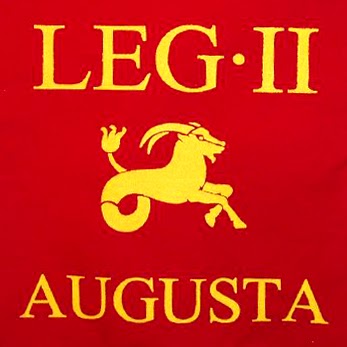The extent of Chichester has altered at various times.
The settlement was first established as a winter fort for the Second Augustan Legion under Vespasian (the future emperor) shortly after the Roman invasion in AD 43. Like all Roman walled towns, Noviomagus Reginorum was divided into four quarters by two main roads or streets crossing approximately in the middle of the town. The public baths are beneath West Street, the amphitheatre under the cattle market and the basilica is thought to be beneath the cathedral.
The town became an important residential, market and industrial centre, producing both fine tableware and enamelwork. In the 2nd century it was enclosed by a bank and timber palisade, which were later rebuilt in stone no doubt with gated access at the cardinal points. Westgate was born, and has remained the main thoroughfare west of the City from this date to now. Bastions were added in the early 4th century and the town was generally improved with much rebuilding, road surfacing and a new sewerage system.
By the 380s however, Noviomagus appears to have been largely abandoned, perhaps because of Saxon raids along the south coast. According to the Anglo-Saxon Chronicle, the town was eventually captured towards the close of the 5th century by Aelle of the South Saxons. It was renamed Cissacestre (whence Chichester) after his son, Cissa, and possibly retained as a royal residence.
In those early times, the City probably covered a large area outside the walls in addition, for purposes of defence and for food supplies. Dirty industries like tanning were also to be found immediately outside as were the burial grounds – there are early cemeteries of varying importance outside every Chichester gate, including underneath the Georgian Priory garage block.
This text is the first in a monthly series of five about the suburb of St Bartholomew’s Without in the wider context of the development of the City of Chichester. It is drawn from an edited extract of a 1935 publication (details below). As such it has kept a centuries-old way of talking about Chichester where the city walls, gates, ditch and parishes defined our boundaries, untrammelled by the modern changes that not much more than five years later would come finally to disrupt the millennial harmonies of our cityscape.
Sources:
Main body of text – GB Historical GIS / University of Portsmouth, Chichester St Bartholomew CP/AP through time | Census tables with data for the Parish-level Unit, A Vision of Britain through Time. URL: http://www.visionofbritain.org.uk/unit/10287480
Victoria County History Publication A History of the County of Sussex: Volume 3 Author L.F. Salzman (editor) Year published 1935 Pages 71-82. URL: http://www.british-history.ac.uk/report.aspx?compid=41659
